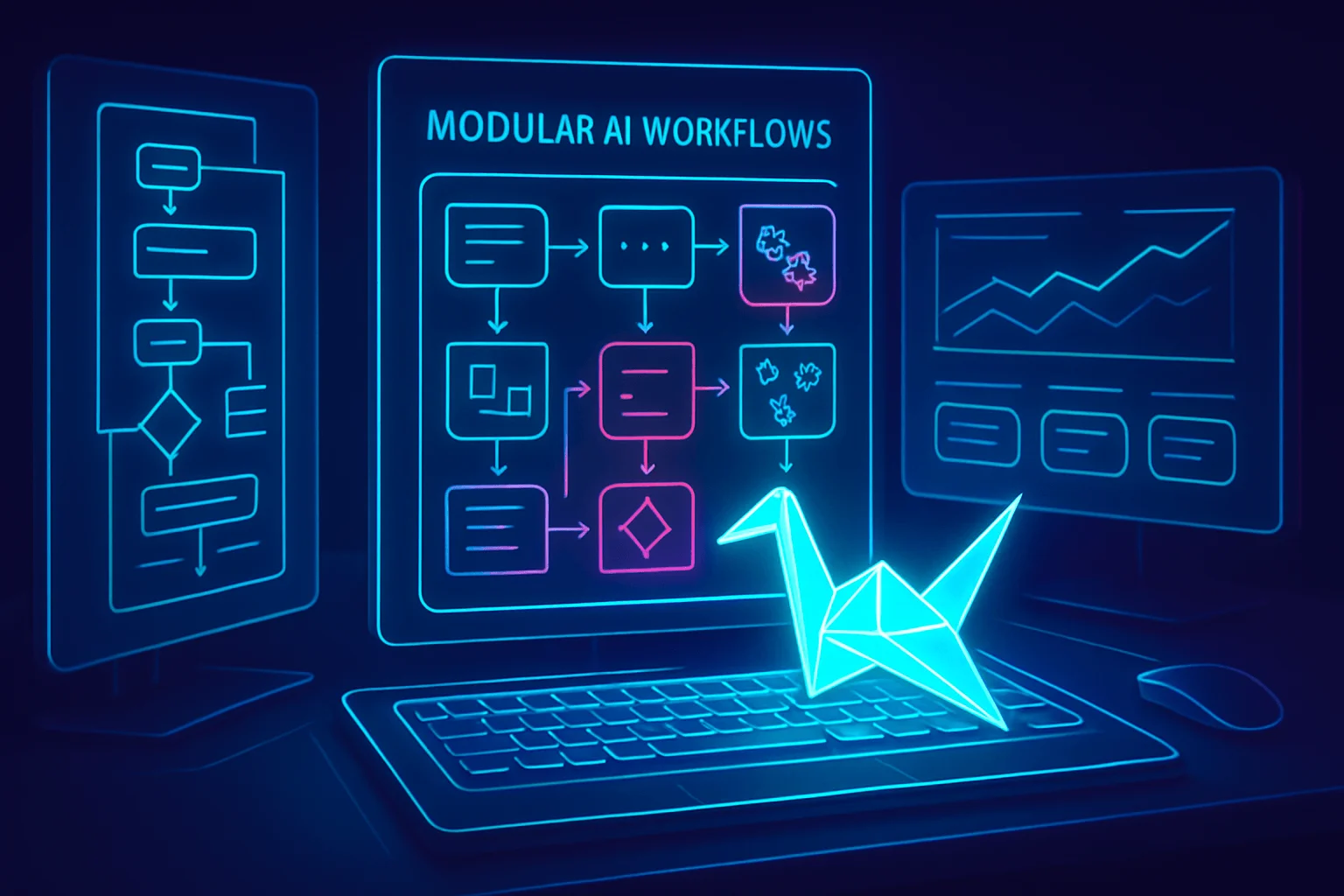Maximize AI Automation Success by Ensuring Reliable Business Data

Imagine pouring your most ambitious business strategies into an advanced AI system—only to watch its predictions falter and its automations backfire, all because of a hidden flaw: unreliable data beneath the surface. In today’s era of rapidly expanding AI-powered automation, organizations chase efficiency, speed, and smarter insights. But without accurate, dependable data as the foundation, even the most sophisticated algorithms can lead teams astray, spark costly mistakes, and damage trust in digital initiatives.
This article dives into the easily overlooked traps of poor data quality that can undermine AI-driven processes, from subtle inconsistencies to deeply rooted silos. You’ll discover how to spot and avoid these common pitfalls, why clean business data is more than a technical concern, and which proven frameworks and best practices can help fortify your AI projects for lasting success. Whether you’re a tech leader, business strategist, or hands-on manager, the practical guidance ahead will empower you to turn your data from a liability into your strongest asset on the path to automation excellence.
Ignoring the Source and Integrity of Data Inputs
AI-driven automations are only as reliable as the data they ingest. Too often, businesses take data sources at face value, assuming their accuracy and consistency. This mistake can result in AI models learning from—or automating—processes based on inaccurate, duplicated, or outdated information, leading to poor decisions and wasted resources.
How to Avoid:
- Establish clear criteria for data source trustworthiness.
- Regularly review and document origin and ownership of each data stream.
- Set up automated data integrity checks before data enters your AI pipelines.
- Maintain a chain-of-custody log for sensitive and critical business data.
Lesson Learned:
“Robust automation begins with robust, well-understood data sources. The chain is only as strong as its weakest link.”
Practical Example:
A logistics company adopted AI for route optimization but failed to vet the accuracy of their fleet’s GPS logs. Over weeks, outdated location data led to inefficient routing recommendations, costing thousands in fuel and labor.
Summary:
Always question where your data comes from, and implement controls to guarantee its integrity from the start.
Skipping Data Cleaning and Preprocessing Steps
Feeding raw business data into AI systems without adequate cleaning or preprocessing is a recipe for unreliable outputs. Even small inconsistencies—such as mislabeled entries, extra spaces, or inconsistent formats—can skew results or cause automations to fail outright.
How to Avoid:
- Incorporate automated data cleaning stages in every AI project workflow.
- Define validation rules for common errors (e.g., missing fields, unacceptable ranges, or format mismatches).
- Schedule regular re-training sessions with freshly cleaned and validated datasets.
- Leverage toolkits and platforms that provide built-in data profiling and anomaly detection.
Lesson Learned:
“Dirty data stalls even the smartest automation. Preprocessing is not optional; it’s foundational.”
Practical Example:
A retail store’s AI-powered inventory system kept flagging items as “out of stock”—not because they were gone, but because item codes were inconsistently formatted due to manual entry errors.
Summary:
Make preprocessing and cleaning a non-negotiable part of your AI deployment process.
Overlooking Data Consistency Across Departments
Organizations often struggle with siloed data systems—each team collects and manages data differently. Without alignment, AI-powered automation can generate conflicting outputs, especially when pulling from multiple departments.
How to Avoid:
- Lead cross-departmental workshops to standardize data definitions and structures.
- Document and map data fields that must be consistent business-wide.
- Use middleware to harmonize disparate databases and enforce shared standards.
- Assign data stewards in each department to ensure ongoing compliance and communication.
Lesson Learned:
“Consistent data bridges departmental divides—unlocking automation’s full potential.”
Practical Example:
A national insurance provider’s AI underwriting tool delivered different risk scores depending on whether it pulled customer data from marketing or claims—due to misaligned field definitions (e.g., address formats).
Summary:
Standardize data across the organization to enable cohesive, accurate AI automation.
Neglecting Data Volume and Representation
AI relies on representative, sufficiently large datasets to learn correct behaviors. Businesses often expect breakthroughs from too-small samples or datasets that underrepresent key scenarios, leading to biased or incomplete automations.
How to Avoid:
- Analyze coverage of your training datasets—identify underrepresented scenarios or groups.
- Augment small datasets by collecting new data, simulating scenarios, or using synthetic data where appropriate.
- Monitor AI system performance across all customer segments, locations, and workflows.
- Set minimum data requirements before scaling automation to production.
Lesson Learned:
“Sample size and diversity dictate the scope of automation you can trust.”
Practical Example:
A financial firm deployed an AI transaction monitor for fraud detection, trained mostly on one region’s historical data. It failed to flag fraud attempts using methods prevalent in other regions.
Summary:
Use well-rounded, ample datasets for training; monitor results to catch underperformance early.
Failing to Monitor and Update Data Over Time
Data quality is not a one-time achievement; it deteriorates as business environments, regulations, and real-world behaviors evolve. Automations built on static datasets lose relevance, accuracy, and compliance.
How to Avoid:
- Implement scheduled data reviews and model retraining (monthly, quarterly, or as business dictates).
- Optionally, build pipelines to incorporate near-real-time updates into your AI models.
- Stay informed about regulatory or business changes that require new data sources or updates.
- Assign responsibility for ongoing data audits and model performance tracking.
Lesson Learned:
“Automation is alive—neglect ongoing data maintenance and it will become obsolete.”
Practical Example:
A healthcare provider automated appointment scheduling. As new types of health services were added, the static dataset did not reflect available slots for new appointments, leading to double-bookings and patient frustration.
Summary:
Schedule recurring reviews and invest in processes for continual data and model updates.
Not Addressing Data Privacy and Compliance Risks
Automating workflows with AI often intersects with handling sensitive personal or proprietary data. Ignoring privacy, security, or local compliance requirements threatens not only system reliability but also company reputation and legal standing.
How to Avoid:
- Conduct a data privacy impact assessment before deploying any AI automation.
- Identify and categorize sensitive data; enforce strict access controls around it.
- Ensure all data collection and processing meet regulatory standards (e.g., GDPR, HIPAA).
- Provide ongoing training to staff on privacy and compliance obligations.
Lesson Learned:
“Responsible automation respects privacy. Compliance isn’t a checkbox—it’s central to trust.”
Practical Example:
An e-commerce firm implemented a chatbot for customer service, inadvertently exposing sensitive order histories because data privacy filters were not applied to the AI’s training set.
Summary:
Integrate privacy and compliance into your data and automation design from day one.
Best Practices for Ensuring Reliable Business Data in AI Automation
-
Implement a Continuous Data Quality Monitoring Program:
Designate teams to actively track, profile, and remediate data issues as soon as they emerge. Use alert systems and dashboards for real-time insight. -
Adopt Data Lineage Tools:
Leverage platforms that clearly visualize where your data comes from, how it transforms, and where it’s used. This aids in root-cause analysis and regulatory audits. -
Use Version Control for Datasets and Schemas:
Catalog every modification in your dataset and database schema so you can revert or audit changes when anomalies in automation outputs are detected. -
Automate Data Validation at Ingestion Points:
Establish automated validations, such as input field checkers and duplicate detection, right where data first enters your ecosystem. -
Foster a Data Quality Culture:
Make data cleanliness and responsibility a core business value. Reward teams who proactively address quality issues and share data improvement ideas. -
Pilot Automations on a Sample Before Full Rollout:
Test AI workflows on well-curated sample data to observe errors and unanticipated results—then refine before organization-wide deployment.
FAQs
Q: How can I assess if my organization’s data is suitable for AI automation?
A: Begin with a comprehensive data audit: inventory your data sources, review sample records, and inspect for completeness, accuracy, timeliness, and consistency. Engage both technical teams and business owners to validate field meanings. Once gaps are identified, address them with targeted cleanup and governance processes before moving forward.
Q: Can automation tools help with data quality, or is manual effort always required?
A: Modern AI and data management platforms now offer robust automated features such as anomaly detection, data profiling, duplicate resolution, and even self-healing routines. However, for complex business logic, edge cases, or legacy system integration, some manual oversight remains essential—especially during initial deployments. A blend of tools and human expertise produces the best results.
Q: What are the warning signs that poor data quality is affecting my automation outcomes?
A: Warning signs include sudden drops or spikes in automation accuracy, increased manual exception handling, repeated customer complaints stemming from incorrect outputs, and inconsistencies between system-generated insights and front-line business knowledge. Regular monitoring, detailed incident logs, and cross-checking with ground truth data are vital for early detection.
Section Actionable Summary:
Prioritize your data as much as your technology. Build ongoing data quality into culture, processes, and tools—from source verification to continual updates. Reliable automation depends on the reliability of your business data at every step.
Maintaining high-quality data is the backbone of successful AI automation. As we explored, ignoring data quality can lead to costly errors, undermined decision-making, and stalled progress. By being proactive with data governance, validation, and collaboration across teams, businesses can sidestep common pitfalls and unlock AI’s full transformative potential. This isn’t just a technical concern—it’s a strategic priority in today’s data-driven world. Take a moment to evaluate your own processes and consider where improvements could make a difference. Ready to maximize your automation outcomes? Share your experiences or questions below, and don’t forget to subscribe for more expert insights on leveraging AI for business success.



